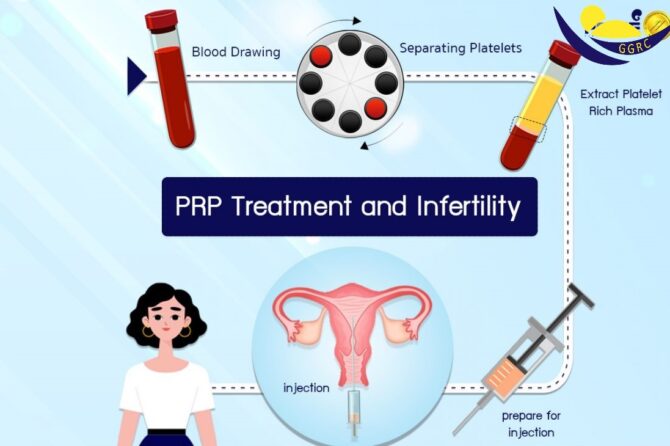
Platelet-Rich Plasma (PRP) Therapy – an Innovation in Reproductive Medicine to Combat Infertility
The Georgian-German Reproductive Center GGRC is one of the first in the Georgian Reproductive Medicine area to introduce platelet-rich plasma therapy, giving many hopeless women another chance to have a baby.
What is the PRP method and how much will it increase the results of infertility treatment?
There are not many treatments in medicine that are used with equal success in different fields, much less their uniform availability, safety and effectiveness. Platelet-rich plasma therapy (PRP) is one of the rare innovative treatment methods in modern medicine that has analgesic and anti-inflammatory effects, rejuvenates and restores tissues at the cellular level. PRP therapy has been used successfully in cosmetology, orthopedics, neurology, traumatology, etc.
PRP therapy has now been introduced in gynecology, reproductive medicine and urology as well.
The PRP method uses platelet-rich plasma and is a therapy that was first used almost three decades ago and in the last few years doctors have started using it to treat urological, reproductive and gynecological problems. This method does not involve medications, invasive surgical procedures, or expensive medical equipment. Platelet-rich plasma is obtained from the patient’s peripheral venous blood, after centrifugation and proper processing, the plasma is used in the form of microinjections in the organs that need help. Thromboplasm contains high concentrations of hormones, peptides, vitamins and growth factors that provide the healing properties of PRP therapy: stimulates tissue growth, fights inflammation, reduces pain, simply, helps to maintain a specific reserve in a specific area of the body.
The advantages of PRP therapy in reproductive medicine, gynecology and urology can be summarized as follows: a fairly wide range of uses, some alternatives to hormone therapy, its price, low side effects, complications and vital risks. It is also noteworthy that the procedure does not take much time. Due to its stimulating and “rejuvenating” properties, the function of the ovaries is activated, which reflects on the quality of the egg and, consequently, improves the patient’s reproductive potential.
PRP can be used with similar success in the treatment of chronic gynecological diseases such as vulvar kraurosis, cervical erosion and leukoplakia, chronic salpingo-oophoritis and endocervicitis, and more importantly in infertility caused by scarce follicles.
During ovarian PRP therapy, platelet-rich plasma microinjections are made into the ovaries. As already mentioned, the duration of the procedure is short and is completed under intravenous anesthesia. The result is made in 1-6 months. Prior to the ovarian plasmolifting procedure, of course, clinical-laboratory examinations are recommended.
Leave a reply
Indimedo Online pharmacy we have all types of medicine. We gives you heavy discount than others online pharmacy and more convenient than your nearby chemist shop because we gives same day secure delivery.To place an order just give a call on +91 9667792090 or visit our official website http://www.indimedo.com.
ReplyThis is great post and a valuable source for all.
ReplyI have read your article this is so knowledgeable for me hope you will give more good topic on your site.
ReplyHello! I am 43 and I want baby with my eggs. I had regular cycles till May this year, but now they are irregular. Because of that I am interesting for PRP for ovaries and all details about that. What cost and everything else… Best regards, D.
ReplyAfter reading this article, I have learned a lot of new and interesting information about PRP therapy. I had no idea that it could be used for reproductive medicine or urology. This is definitely something that I will look into further if I ever need any help in these areas. Thank you for sharing this valuable information with us!
Reply